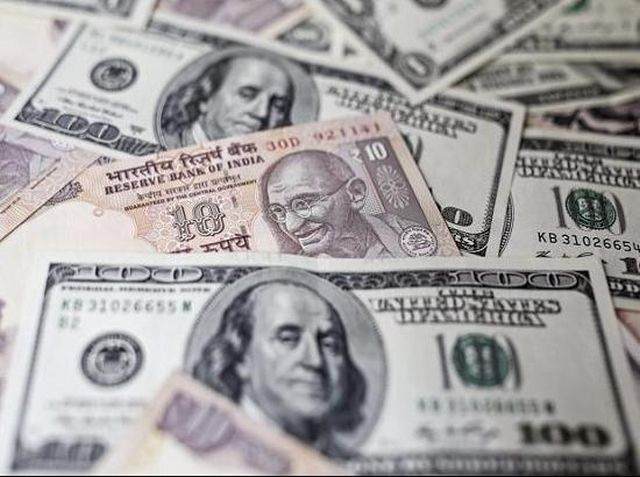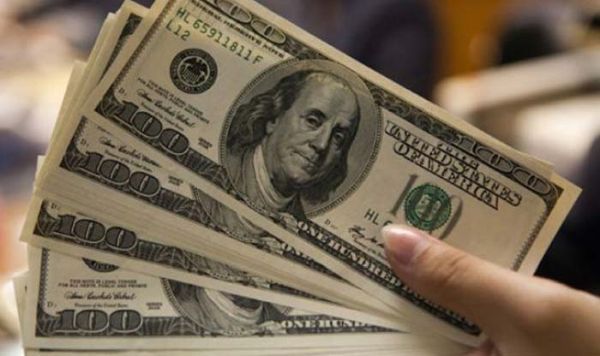
by admin | May 25, 2021 | Economy, News, World
 New York : The US dollar declined as the allure of the greenback diminished amid a slew of downbeat economic data.
New York : The US dollar declined as the allure of the greenback diminished amid a slew of downbeat economic data.
In late New York trading on Thursday, the euro rose to $1.1299 from $1.1269 in the previous session, and the British pound decreased to $1.2801 from $1.2850 in the previous session, Xinhua news agency reported.
The Australian dollar rose to $0.7105 from $0.7094.
The US dollar bought 110.47 Japanese yen, lower than 110.99 Japanese yen of the previous session. The US dollar was down to 1.0047 Swiss franc from 1.0088 Swiss franc, and it increased to 1.3281 Canadian dollars from 1.3250 Canadian dollars.
US retail sales in December fell 1.2 per cent from the prior month, the worst drop in nine years, the Commerce Department reported on Thursday.
The unexpected decline, which came after a downwardly revised 0.1 per cent increase in November, signals a weaker economic momentum.
The dollar index, which measures the greenback against six major peers, fell 0.15 per cent at 96.9817 in late trading.
—IANS

by admin | May 25, 2021 | Business, Medium Enterprise, SMEs, World
 Beijing : The central parity rate of the Chinese currency renminbi, or the yuan, weakened 414 basis points to 6.7495 against the US dollar on Monday, according to the China Foreign Exchange Trade System.
Beijing : The central parity rate of the Chinese currency renminbi, or the yuan, weakened 414 basis points to 6.7495 against the US dollar on Monday, according to the China Foreign Exchange Trade System.
In China’s spot foreign exchange market, the yuan is allowed to rise or fall by 2 per cent from the central parity rate each trading day, Xinhua news agency reported.
The central parity rate of the yuan against the US dollar is based on a weighted average of prices offered by market makers before the opening of the interbank market each business day.
—IANS

by admin | May 25, 2021 | Economy, Finance, Markets, News
 Mumbai : High global crude oil prices, along with fears over an escalation in the trade war and outflows of foreign funds from the country’s equity market segment pulled the Indian rupee to a new record low of 72.11 per US dollar on Thursday.
Mumbai : High global crude oil prices, along with fears over an escalation in the trade war and outflows of foreign funds from the country’s equity market segment pulled the Indian rupee to a new record low of 72.11 per US dollar on Thursday.
However, the Indian rupee later recovered and settled at a record closing low of 71.99, weaker by 24 paise than its previous close of 71.75 per greenback.
In the intra-day trade, the Indian rupee touched 72.11 per US dollar — the lowest ever mark — against the greenback at the Inter-Bank Foreign Exchange Market.
“Rupee was surprisingly under pressure today, unlike as overnight other Asian currencies which were tad stronger,” Edelweiss Securities’ Head of Forex and Rates Sajal Gupta, told IANS.
“Markets are expecting some support from policy makers in terms of a separate window for OMCs (Oil Marketing Companies) and more relaxation on buyers credit and ECB (External Commercial Borrowing) guidelines. RBI intervened at various levels but was not very effective to contain the movement.”
The RBI is known to enter the markets via intermediaries to either sell or buy US dollars to keep the rupee in a stable orbit.
According to Anindya Banerjee, Deputy Vice President for Currency and Interest Rates with Kotak Securities: “Brent crude prices are showing signs of recovery, which is a negative for rupee. Tonight, all eyes will be on Trump’s announcement of tariffs on Chinese imports.”
“If US backs off, then it can be a positive development for rupee, otherwise negative. rupee has a strong correlation with the Chinese currency. Whatever will be the decision of the US administration on trade with China, according Chinese currency will react.”
“Over the near term a range of 71.50 and 72.30 is expected on spot.”
Apart from global cues, outflows of foreign funds from the country’s equity segment subdued the Indian rupee.
The provisional data with exchanges showed that foreign institutional investors sold scrip worth Rs 455 crore on Thursday.
—IANS

by admin | May 25, 2021 | Banking, Economy, Finance, Markets, News
 By Rohit Vaid,
By Rohit Vaid,
Mumbai : The Indian rupee’s movement against the US dollar and the upcoming macro-economic data points are expected to chart the course of key domestic equity indices during the coming week.
According to market observers, other factors such as the direction of foreign fund flows, derivatives expiry and the volatility in global crude oil prices will also impact investor sentiments.
“Crude oil prices, along with the rupee’s movement and the direction of foreign funds are likely to dictate market trends,” SMC Investments and Advisors’ Chairman and Managing Director D.K. Aggarwal told IANS.
“Investors will also remain cautious over the possibility of any rate hike by the US Fed, which can potentially drive away foreign funds from emerging markets such as India.”
Lately, a weakened Indian rupee has been a matter of concern for investors.
However, a reversal in the rupee’s trajectory was seen last week as it strengthened by 25 paise to close at 69.91 against the US dollar.
“The rupee is expected to be range-bound next week. In his speech at the Jackson Hole, US Fed Chairman has reiterated that the Fed will raise interest rates gradually,” said Rushabh Maru, Research Analyst with Anand Rathi Shares and Stock Brokers.
“Now the focus will shift to India’s GDP data, due to release next week. Expected range is estimated between 69.60 and 70.20.”
Besides, crucial data points on the country’s fiscal deficit, Index of Eight Core Industries and the Quarterly GDP growth rate will be keenly watched by the market participants.
Additionally, the direction of foreign fund flows will play a key role to determine market movement. Provisional figures from the stock exchanges showed that foreign institutional investors (FIIs) bought scrips worth Rs 128.64 crore during the week ended August 24.
On technical-charts, any further upsides in the National Stock Exchange (NSE) Nifty 50 are seen after the immediate resistance level of 11,621 points is crossed.
“Technically, with the Nifty surging to new highs, its intermediate trend remains up,” said Deepak Jasani, Head of Retail Research for HDFC Securities.
“The intermediate uptrend is likely to continue once the immediate resistance of 11,621 points is taken out. Crucial supports to watch for resumption of weakness is at 11,499 points.”
Last week, both the key Indian equity indices — S&P BSE Sensex and NSE Nifty 50 — rose for the fifth consecutive week and scaled new highs during the August 20-24 period despite global trade war tensions.
On August 23, both key indices touched their respective intra-day all-time high levels, before settling at their record closing levels.
Consequently, the barometer 30-scrip Sensitive Index (Sensex) of the Bombay Stock Exchange (BSE) rose by 303.92 points or 0.80 per cent to close at 38,251.80 points on a weekly basis.
Similarly, the wider Nifty50 on the NSE made gains. On Friday, it ended at 11,557.10 points, higher by 86.35 points or 0.75 per cent from the previous week’s close.
(Rohit Vaid can be contacted at rohit.v@ians.in )
—IANS

by admin | May 25, 2021 | Economy, Markets, News
 By Rohit Vaid,
By Rohit Vaid,
Mumbai : Persistently high global crude oil prices, along with the rupee’s movement against the US dollar and the ongoing quarterly results season are expected to drive the trajectory of the key Indian equity indices in the coming week.
However, analysts predict a negative reaction from investors on the formation of a non-BJP government in Karnataka and any further outflow of foreign funds.
“Markets will closely track the floor test results in Karnataka,” Devendra Nevgi, Founder and Principal Partner, Delta Global Partners, told IANS.
“Globally USD, US interest rates and crude oil prices need to be monitored due to their influence on the local markets.”
Apart from Karnataka politics, crude oil prices which have lately been around the $80 per barrel-mark are expected to impact investor sentiments.
As per the latest estimates of the Finance Ministry, the rise in oil prices may inflate India’s import bill by around $25 billion to $50 billion. The surge has already pushed the cost of petrol in the national capital to Rs 75.32 per litre.
Besides, the rupee’s price movement against the US dollar will also be crucial for the market, especially in the backdrop of a continuous outflow of foreign funds.
“Rupee continues to weaken against the US dollar as outflows continue across the emerging markets. However, high oil prices and political risk premium in a pre-election year is ensuring that the rupee remains as an underperformer in the EM basket,” Anindya Banerjee, Deputy Vice President for Currency and Interest Rates with Kotak Securities, told IANS.
“Developments in Karnataka are not going to have any lasting adverse impact on the rupee bit come Monday, but there is a risk of a knee-jerk sell-off in the INR against the USD.”
On a weekly basis, the Indian rupee weakened by 68 paise to close at 68.01 against the US dollar from its previous close of 67.33 per greenback.
In terms of investments, provisional figures from the stock exchanges showed that foreign institutional investors sold scrips worth Rs 1,496.79 crore during the trade week ended May 18.
According to the National Securities Depository (NSDL), foreign portfolio investors (FPIs) divested equities worth Rs 799.88 crore, or $117.63 million.
In addition to the rupee’s movement, companies like Bata India, Bharat Forge, Bosch, Cipla, Dr Reddys Lab, Future Consumer, IndianOil, State Bank of India, Jet Airways and Tata Motors are expected to announce their fourth quarter (Q4) earning results in the coming week.
“We are also expecting to see a mixed bag of result for Q4 going forward. With Q4 results below estimates, there are concerns of downgrade in FY19 estimates,” said Vinod Nair, Head of Research at Geojit Financial Services.
Technical charts showed the National Stock Exchange’s (NSE) Nifty50 in a downtrend.
“Technically, with the Nifty ending lower for the fourth consecutive session and closing below the short term trend reversal levels of 10,630 points, the underlying uptrend has reversed,” said Deepak Jasani, Head of Retail Research for HDFC Securities.
“The coming week could see further downsides towards 10,514 points and lower. On the upside bounces, 10,692 points-level can offer resistance.”
The political stand-off in Karnataka, consistent rise in global crude oil prices and outflow of foreign funds, pulled the key Indian equity indices deep into the red in the week just-ended.
Consequently, the barometer 30-scrip Sensitive Index (Sensex) of the BSE declined by 687.49 points or 1.93 per cent to 34,848.30 points.
Similarly, the wider NSE Nifty50 edged-lower. It ended at 10,596.40 points — down 210.1 points or 1.94 per cent — from its previous close.
(Rohit Vaid can be contacted at rohit.v@ians.in)
—IANS

 New York : The US dollar declined as the allure of the greenback diminished amid a slew of downbeat economic data.
New York : The US dollar declined as the allure of the greenback diminished amid a slew of downbeat economic data.



